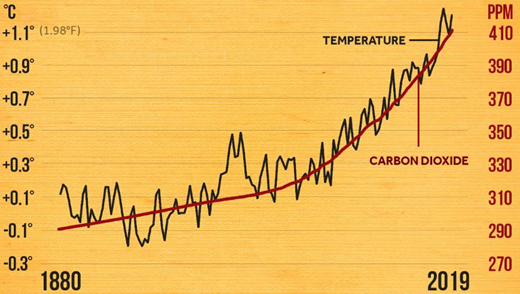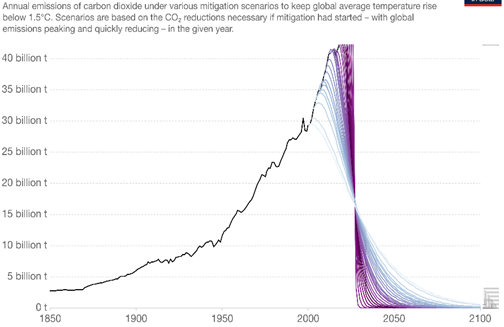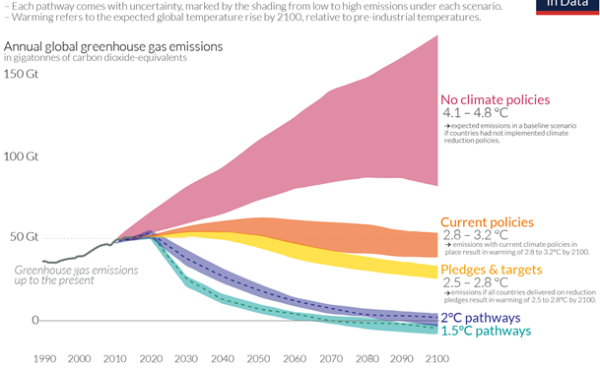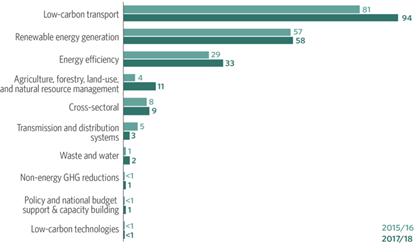Mar
2021
The Danger of Climate Change
DIY Investor
5 March 2021
 The iClima Global Decarbonisation Enablers UCITS ETF
The iClima Global Decarbonisation Enablers UCITS ETF
The importance of a climate change ETF
Since the late 19th century, increasing rates of CO2e have been polluting the earth’s atmosphere. The increase in CO2e emissions picked up pace at the end of the last century, and this has led to an increasing rise in global temperatures as illustrated in the graph below.

For illustrative purposes only
Source of chart: Climate Central. Data source: NASA GISS, NOAA NCEI, ESRL.
In the 2015 Paris Agreement, world leaders agreed a path to reducing emissions in order to limit global temperature rises and avoid the worst impacts from climate change this century.
However, levels of emissions have been increasing since the Agreement, and the world now must act more drastically in order to meet the goals laid out in 2015.
CO2 reductions needed to keep global temperature rise below 1.5°C

For illustrative purposes only
Source: Robbie Andrews 2019; based on Global Carbon Project & IPPC SR15
In 2019, the equivalent of 56 Gt[1] of CO2e were released into the atmosphere[2]. 1 Gt of CO2e is enough to cover the UK in a blanket of CO2e 4.1 meters thick[3].
To achieve the target of limiting temperature rises to 1.5°C, we must halve the current level of CO2e emissions within 10 years[4]. That’s a yearly reduction target of about 4 Gt of CO2e. Incremental improvements will not be enough.
By sticking to current policies, it is estimated that the climate will reach 2.8-3.2°C above pre-industrial levels, which will compound the effects of climate change, destroying ecosystems and livelihoods around the world.
Global greenhouse gas emissions and warning scenarios

For illustrative purposes only
Source: https://ourworldindata.org/future-emissions
For the world to reach the above targets and achieve net-zero emissions by 2050, large amounts of investment are necessary, and this is why we have created our climate change ETF.
The CPI estimates that in 2018 annual investment flow reached $579 billion. However, the Intergovernmental Panel on Climate Change (IPCC, 2018) estimates that at least three times that amount ($1.6 trillion) of annual investments will be needed until 2050 to achieve the low-carbon transition[5]. The chart below shows public expenditure alone on mitigation efforts.
Average annual public mitigation finance: 2015-2018, $USD bn

For illustrative purposes only
Source: IPCC, CPI Investment Tracking Tool
To learn more about our climate change ETF, please visit our fund page.
Click here to download the full Whitepaper.

The price of any Shares or the value of an investment in ETPs may go up or down and an investor may not get back the amount invested. Past performance is not a reliable indicator of future performance. This material is not intended to be relied upon as a forecast, research or investment advice, and is not a recommendation, offer or solicitation to buy or sell any financial instrument or product or to adopt any investment strategy. Any decision to invest should be based on the information contained in the appropriate prospectus and after seeking independent investment, tax and legal advice.
These products may not be available in your market or suitable for you. The content of this document does not constitute investment advice nor an offer for sale nor a solicitation of an offer to buy any product or make any investment.
Leave a Reply
You must be logged in to post a comment.